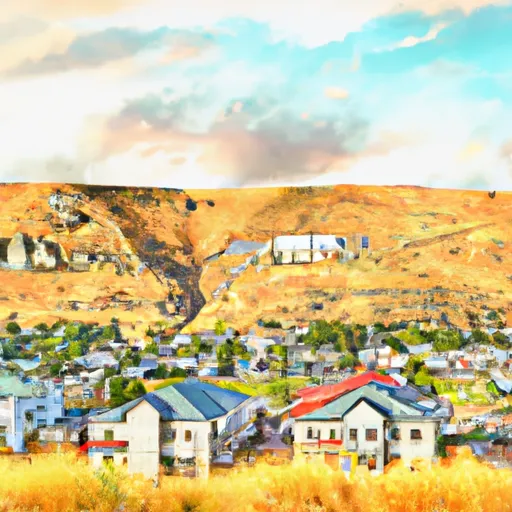-
 Snoflo Premium
Snoflo Premium
Get unlimited access to all our content
With no Ad interruptions! - Start Your Free Trial Login with existing account
Sand-Coulee
Eden Index
Climate
7.6
•
Recreation
3.8
•
Community
2.3
•
Safeguard
4.9/10

Sand Coulee is a small community located in Cascade County, Montana. The region experiences a continental climate, characterized by a wide range of temperatures throughout the year. Summers are warm with average highs around 85°F, while winters are cold with temperatures dropping below freezing. The area receives a moderate amount of precipitation, with the majority falling during the spring and early summer months.
The hydrology constituents of Sand Coulee are influenced by the Sun River, which flows nearby. The river provides opportunities for fishing, with species like trout and pike inhabiting its waters. Additionally, the area is surrounded by expansive grasslands and rolling hills, making it a perfect destination for hiking, birdwatching, and wildlife viewing.
For outdoor enthusiasts, Sand Coulee offers a variety of recreational opportunities. The nearby Little Belt Mountains provide ample trails for hiking, horseback riding, and ATV adventures. Hunting is also popular in the area, with opportunities to pursue deer, elk, and upland game birds. During the winter months, residents and visitors can enjoy snowmobiling and cross-country skiing in the surrounding areas.
Overall, Sand Coulee offers a diverse range of outdoor activities, making it an appealing destination for nature lovers and adventure seekers alike.
What is the Eden Index?
The Snoflo Eden Index serves as a comprehensive rating system for regions, evaluating their desirability through a holistic assessment of climate health, outdoor recreation opportunities, and natural disaster risk, acknowledging the profound impact of these factors on livability and well-being.
Climate Health Indicator (CHI): 7.6
Sand-Coulee receives approximately
412mm of rain per year,
with humidity levels near 63%
and air temperatures averaging around
8°C.
Sand-Coulee has a plant hardyness factor of
4, meaning
plants and agriculture in this region thrive during a short period during spring and early summer. Most
plants will die off during the colder winter months.
By considering the ideal temperature range, reliable water supplies, clean air, and stable seasonal rain or snowpacks, the Climate Health Indicator (CHI) underscores the significance of a healthy climate as the foundation for quality living.
A healthy climate is paramount for ensuring a high quality of life and livability in a region, fostering both physical well-being and environmental harmony. This can be characterized by ideal temperatures, reliable access to water supplies, clean air, and consistent seasonal rain or snowpacks.
Weather Forecast
Streamflow Conditions
Upper Missouri
Area Rivers
Upper Missouri
Snowpack Depths
Upper Missouri
Reservoir Storage Capacity
Upper Missouri
Groundwater Levels
Recreational Opportunity Index (ROI): 3.8
The Recreational Opportunity Index (ROI) recognizes the value of outdoor recreational options, such as parks, hiking trails, camping sites, and fishing spots, while acknowledging that climate plays a pivotal role in ensuring the comfort and consistency of these experiences.
Access to outdoor recreational opportunities, encompassing activities such as parks, hiking, camping, and fishing, is crucial for overall well-being, and the climate plays a pivotal role in enabling and enhancing these experiences, ensuring that individuals can engage in nature-based activities comfortably and consistently.
Camping Areas
| Campground | Campsites | Reservations | Toilets | Showers | Elevation |
|---|---|---|---|---|---|
| Gateway Military - Malmstrom AFB | None | 3,504 ft | |||
| Logging Creek | 29 | 4,580 ft |
Nearby Fishing
Nearby Ski Areas
Catastrophe Safeguard Index (CSI):
The Catastrophe Safeguard Index (CSI) recognizes that natural disaster risk, encompassing floods, fires, hurricanes, and tornadoes, can drastically affect safety and the overall appeal of an area.
The level of natural disaster risk in a region significantly affects safety and the overall livability, with climate change amplifying these risks by potentially increasing the frequency and intensity of events like floods, fires, hurricanes, and tornadoes, thereby posing substantial challenges to community resilience and well-being.
Community Resilience Indicator (CRI): 2.3
The Community Resilience Indicator (CRI) recognizes that education, healthcare, and socioeconomics are crucial to the well-being of a region. The CRI acknowledges the profound impact of these elements on residents' overall quality of life. By evaluating educational resources, healthcare accessibility, and economic inclusivity, the index captures the essential aspects that contribute to a thriving community, fostering resident satisfaction, equity, and social cohesion.

